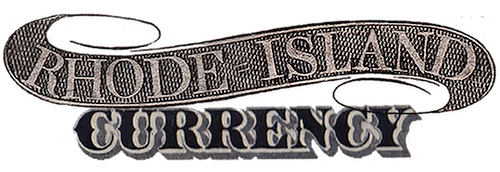New England Commercial Bank, Newport
Established February, 1818 with William Ennis as president, W.T. Dellingham, cashier. It remained a state-chartered bank until its closure. On February 12, 1914, the New York Times noted:
“Stockholders of the New England Commercial Bank to-day voted to approve the recommendation of the trustees to liquidate and to accept the Newport Trust Company as liquidating agent, subject to the approval of the State Bank Examiners.
“The bank was organized in 1818 and has done a flourishing business. Recently two of its leading officials died- William J. Vanderwood*, for many years its cashier, and Capt. Joseph Cotton*, a trustee. The institution is solvent, and the shares are at $50. The book value of the shares is $53.
“Article 12 of the bank’s by-laws provides that no Director of any other bank shall be Director of the New England Commercial. No stockholder was allowed to hold more than 100 shares.” — “Newport Bank to Close,” New York Times, February 12, 1914.
* There appear to be a few mistakes in the article above. Joseph Cotton was president of the bank, not just a trustee, and the cashier’s name was Nicholas Underwood, not William J. Vanderwood. Underwood was a major stockholder in the bank, which became an issue for his wife as principal heir some years later, as one newspaper article reports.
A great number of the New England Commercial Bank’s unsigned remainder banknotes are available today, both as individual pieces and in sheets (see the unsigned notes below). There has been speculation that these are 20th-century reprints from the original plates, possibly created by a junk dealer on North Main Street in Providence in the 1980s. If this were true, the plates may still exist and would be very interesting to collectors (like myself!).
As for the common remainder notes, while they’re handsome, they’re not particularly expensive. Issued notes from this bank are far more rare.




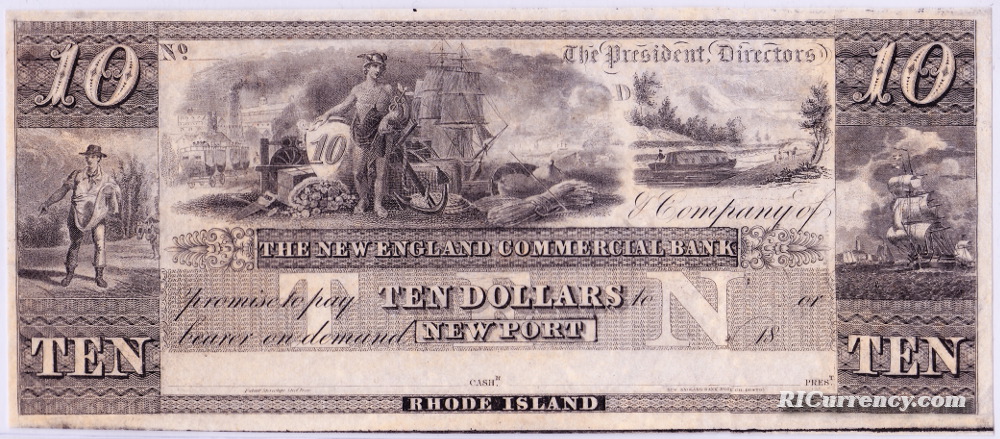

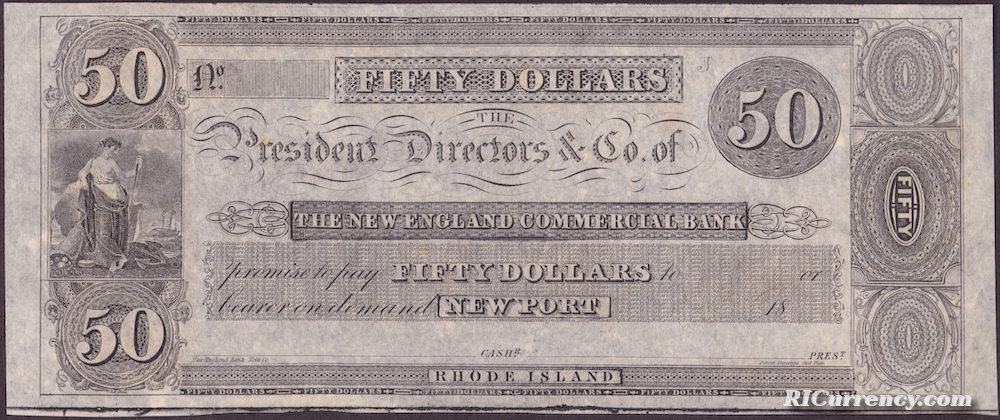
1830s-40s Remainder. Durand 634, Haxby RI-155 G94, Bowers W-RI-540-050-G280
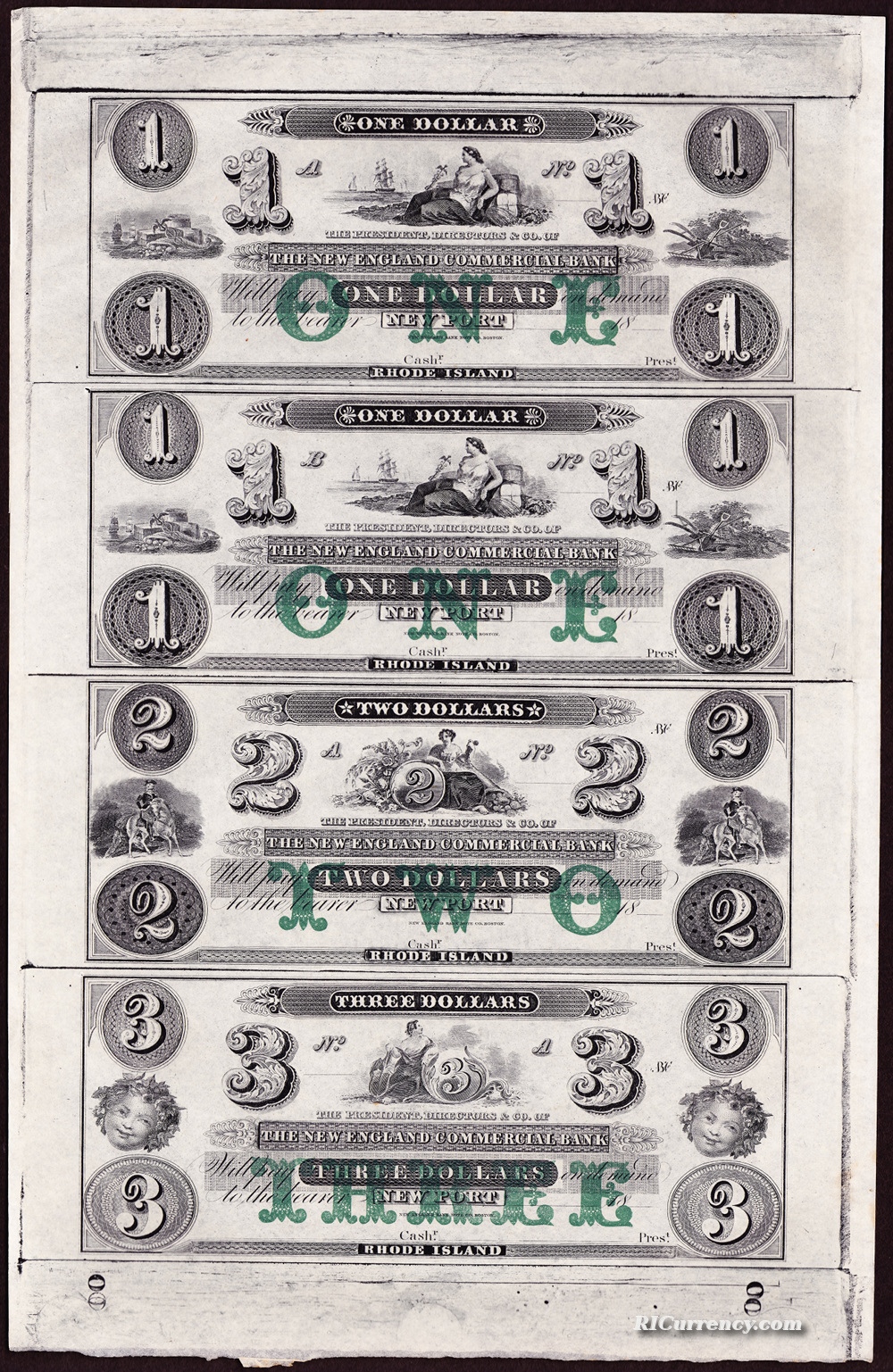
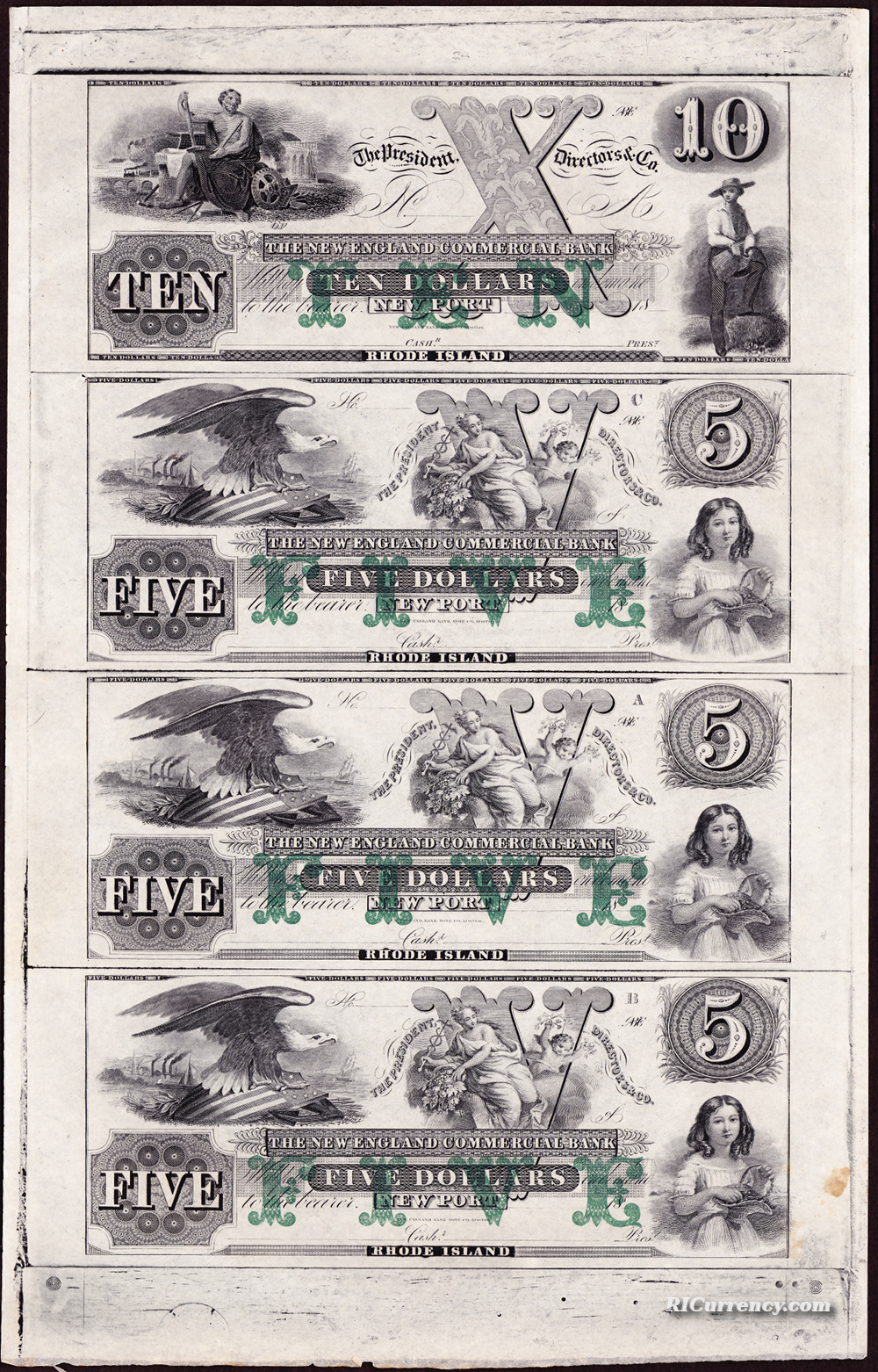
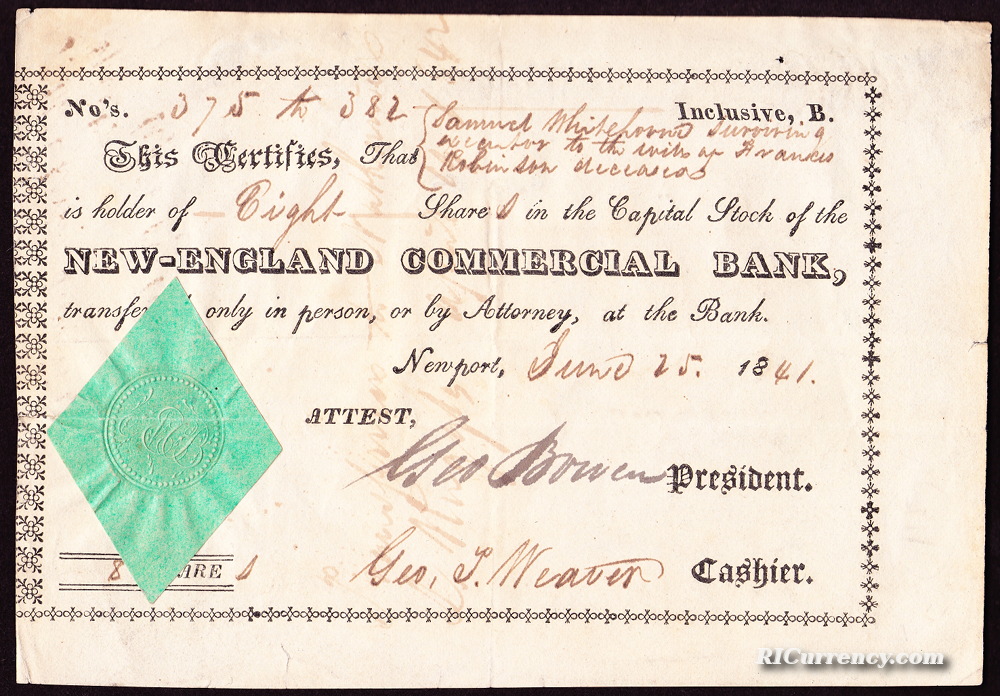
Eight shares, numbered 375 to 382, June 21, 1841. Signed by George Bowen, president, and George T. Weaver, cashier.
